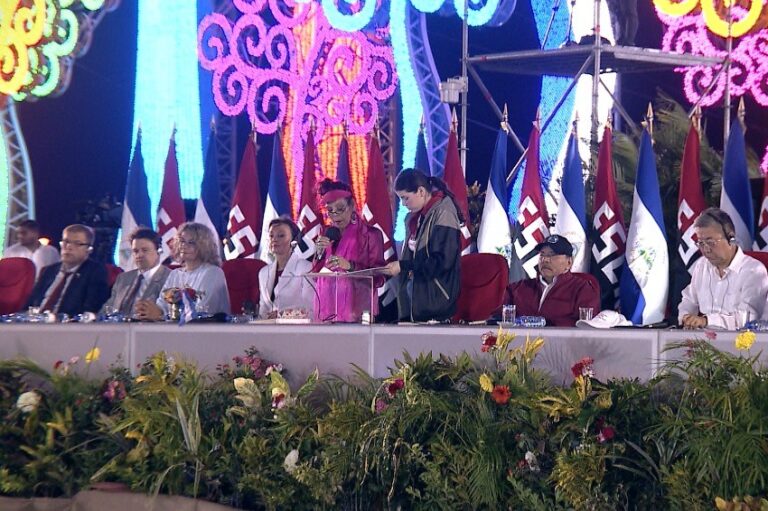Nicaragua Commemorates 46th Years of Sandinist Revolution

Rosario Murillo (C) delivers her speech. Photo: X/ @Canal4Ni
July 19, 2025 Hour: 10:37 pm
Hundreds of thousands of people gathered in the Plaza de la Fe in Managua to commemorate the anniversary of the revolutionary process that overthrew the Somoza dictatorship, a family dynasty that ruled Nicaragua between 1936 and 1979.
RELATED:
Over 86% of Nicaraguans Approve of Daniel Ortega’s Leadership Amid Economic and Social Stability
The celebrations commemorate 19 July 1979, the date on which the Sandinista National Liberation Front (FSLN) guerrilla columns entered Managua. This event took place hours after Somoza’s flight to Miami, who was responsible for the deaths of approximately 50,000 Nicaraguans and for ordering indiscriminate bombings against civilians in several cities.
Rosario Murillo, Nicaraguan co-president stated that in Nicaragua, after more than four decades of struggle against poverty and resistance to all forms of domination and foreign interference, they proclaim themselves “in permanent battle with all the free peoples of the world,” and in a head-on fight against poverty, from respect for “our culture and our ways of being.”
In addition, she highlighted the diversity of the Nicaraguan people, who speak numerous languages, including Garifuna and Mayagna, and positioned himself against the trafficking of identities and wealth of the continent’s peoples carried out by transnational powers.
The co-president also emphasized the importance of peace and concord as a patriotic duty and cultural heritage, reaffirming Nicaragua’s commitment to solidarity and its identity as a free people who loves, dreams and triumphs.
From 1936 to 1979, the Somoza dynasty plunged Nicaragua into extreme poverty and turned it into a neocolonial country deeply dependent on the United States.
It was during that period that, in July 1961, the National Liberation Front was born, inspired by the anti-imperialist ideals and social justice of Augusto César Sandino. The armed organization with revolutionary objectives and guerrilla methods was led by commanders such as Carlos Fonseca, Tomás Borge, and the current president, Daniel Ortega.
After years of struggle, the victory of the revolution on that July 19th meant a resounding defeat for Washington and the triumph of Sandinismo, which opened new possibilities for socialist construction in Latin America and the Caribbean and contributed to strengthening the revolutionary and anti-imperialist movement at a regional and global level.






